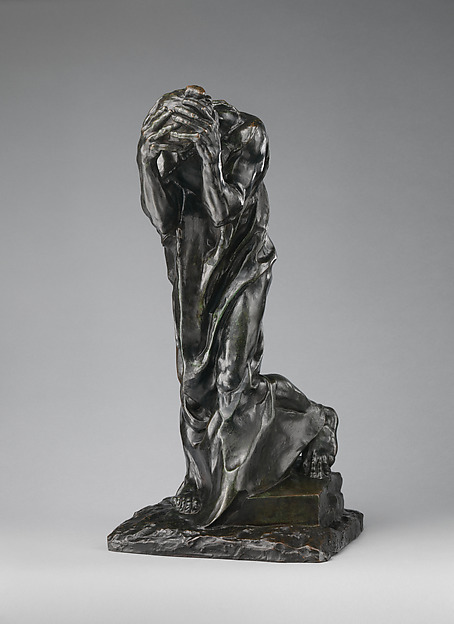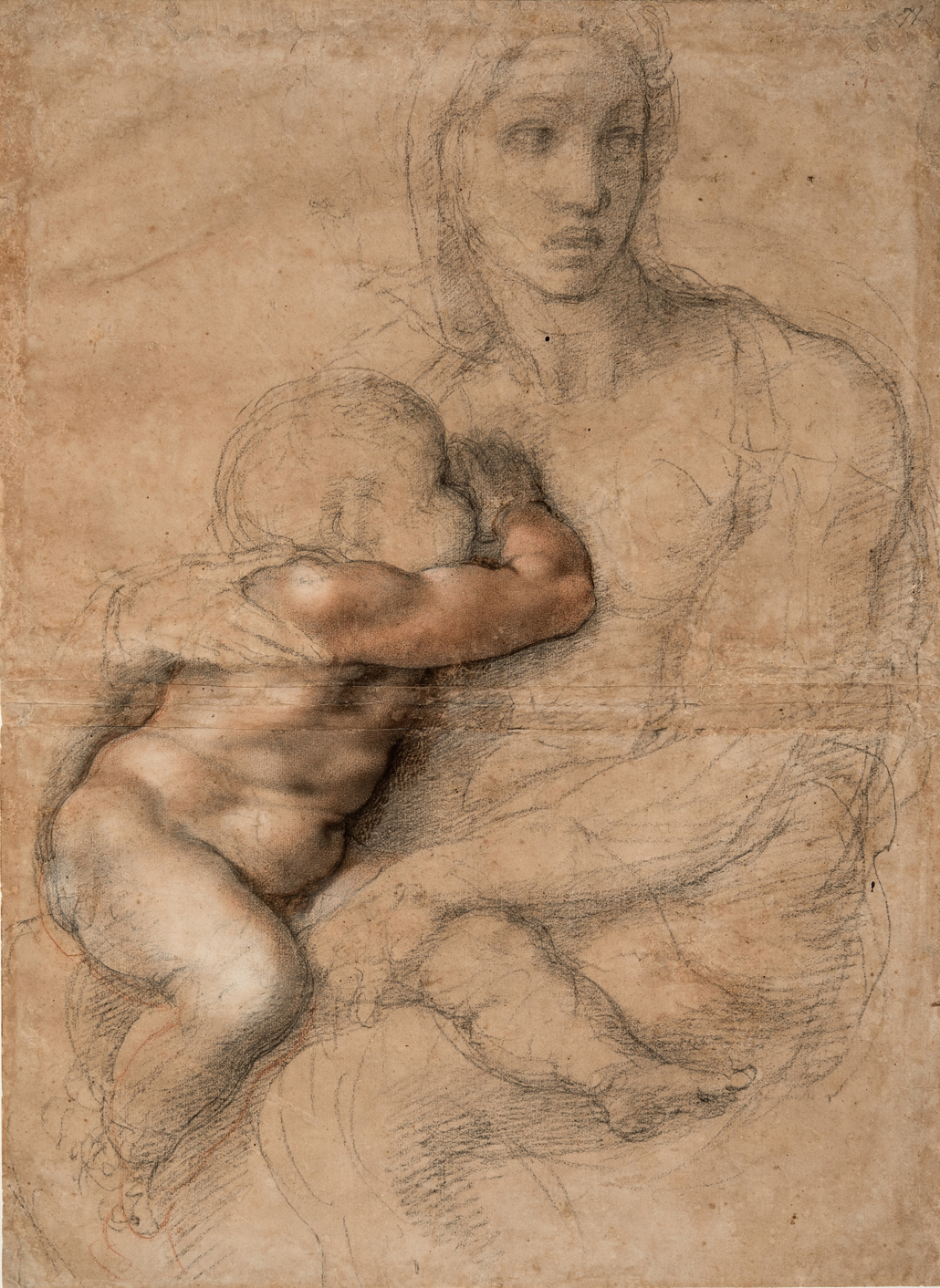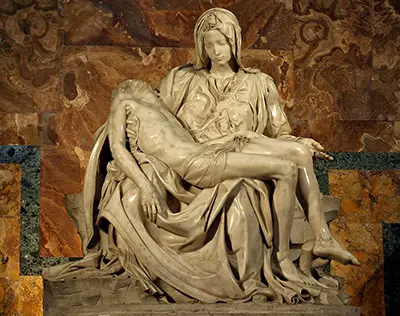In this piece by Rodin, the passion and romance of The Kiss is undeniable, the figures are so involved with each other that their faces can barely be seen. The total embraces with which they hold each other make the tragedy of their love even greater and Rodin draws on themes which all audiences can appreciate in a way which is both romantic and sensual. Although both figures are nude, Rodin’s skill as an artist made sure that the way the figures were rendered was in a classical way and one which was not overtly sexual.
As with many of Rodin’s sculptures The Kiss is designed to be viewed from every angle and Rodin wanted the piece to be believable and real. The artist certainly creates this and by making a sculpture which is visually stimulating from 360 degrees the dedication and skill of Rodin is successfully demonstrated. The contrast between the smooth skin of the lovers and the rough marble of the rock they are sitting on adds further sensual elements to this piece.

This is the last marble sculpture upon which Michelangelo worked during the last weeks of his life in 1564. This sculpture is fascinating for its minimalism, even suggesting the possibility that Michelangelo purposely left it “unfinished,” thereby making it, in some art historian’s view, the earliest piece of “modern art.” The Pieta Rondanini was ignored for centuries, but this is the kind of quality you get in the work of old artists who are skillfully great. They can simplify; they can leave out; in the Rondanini Pieta there’s a whole of Michelangelo’s 89 years’ life somewhere.
Mary stands elevated on a stone platform and bends over the full length corpse of Christ, supporting it with difficulty, from behind. Mary is holding up the slender Christ with her outstretched arms as if offering his spirit, but with time and through nearly three different stages, Christ sank down, now emerging from Mary’s breast and exaggerated in his slender form. Finally, Michelangelo drew the heads of the two figures closer and closer together, dissolving the barrier between mother and son.The two figures have virtually melted into one, with a rigidity that only heightens its emotional appeal that has found admirers in our modern times.

In this piece titled Ajitto by Robert Mapplethorpe, it does not picture two bodies, but it emphasizes on the one in great detail. With a simple glance, the viewer can easily spot every form of muscle definition present in this man and, even without his face on display, his apparent internal turmoil is evident. Sitting on such a stool in the form he is presented in exhibits a level of pain and discomfort, but the feeling of comfort in coiling into himself may be strong enough to overpower the physical torture.




















